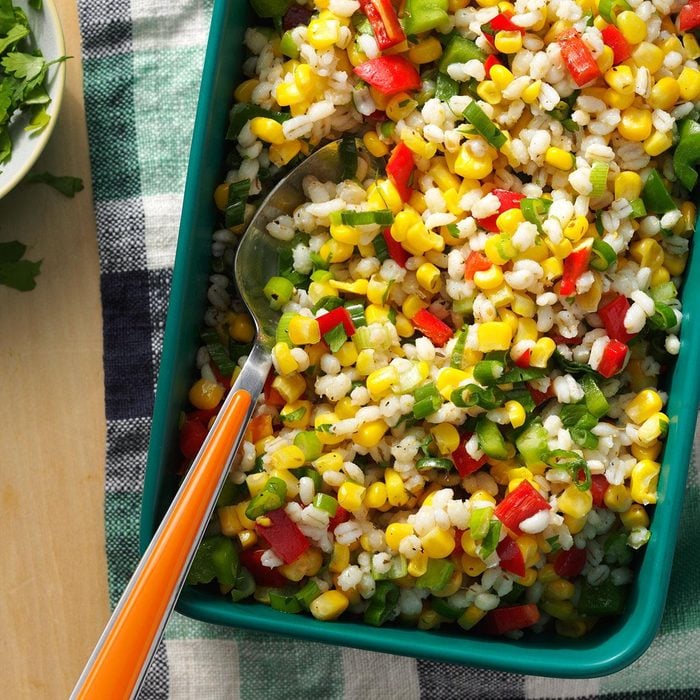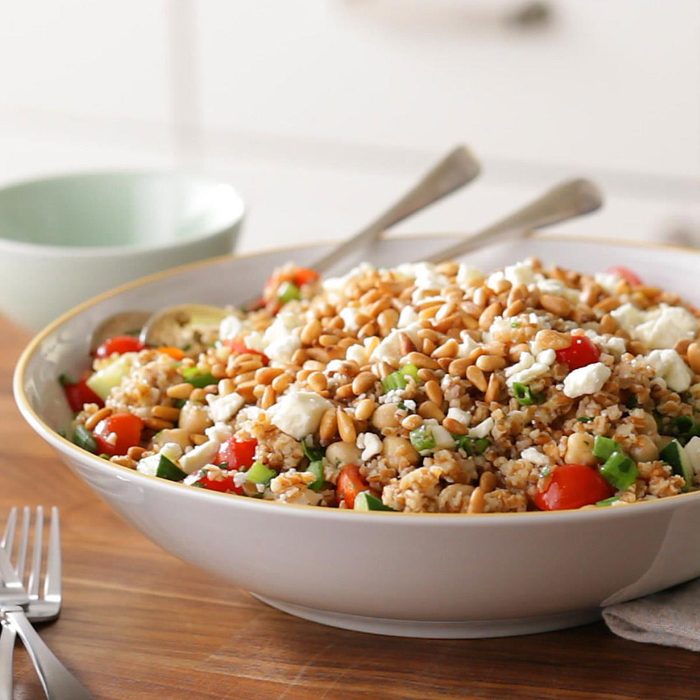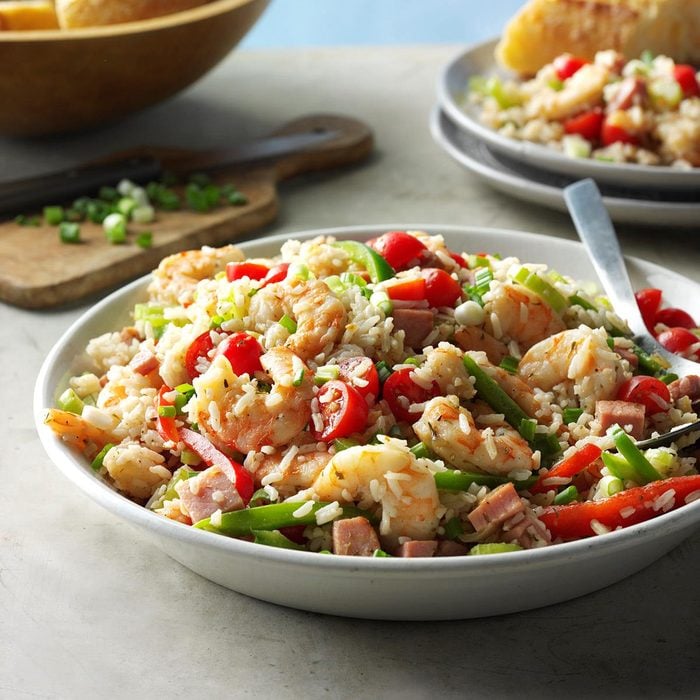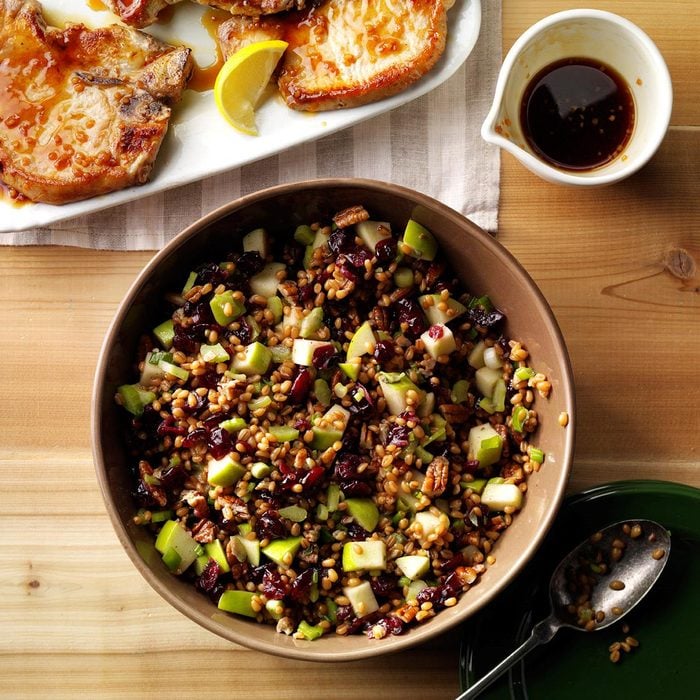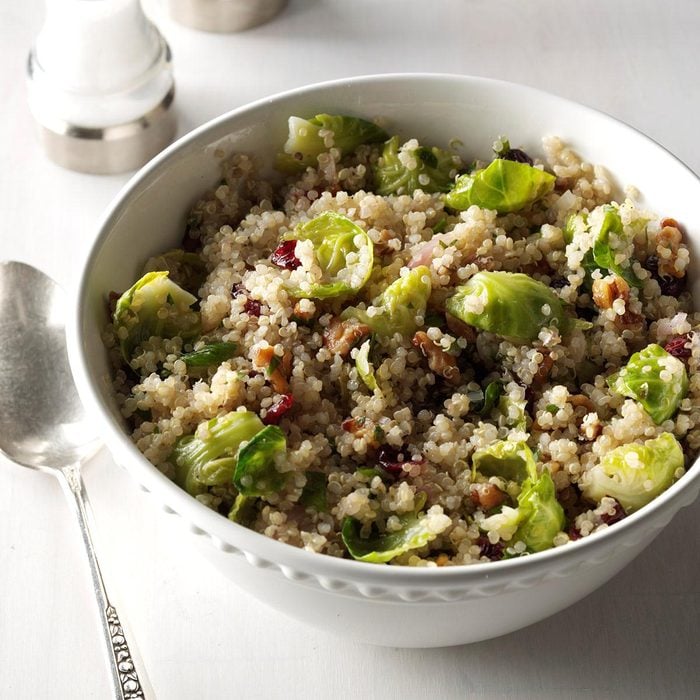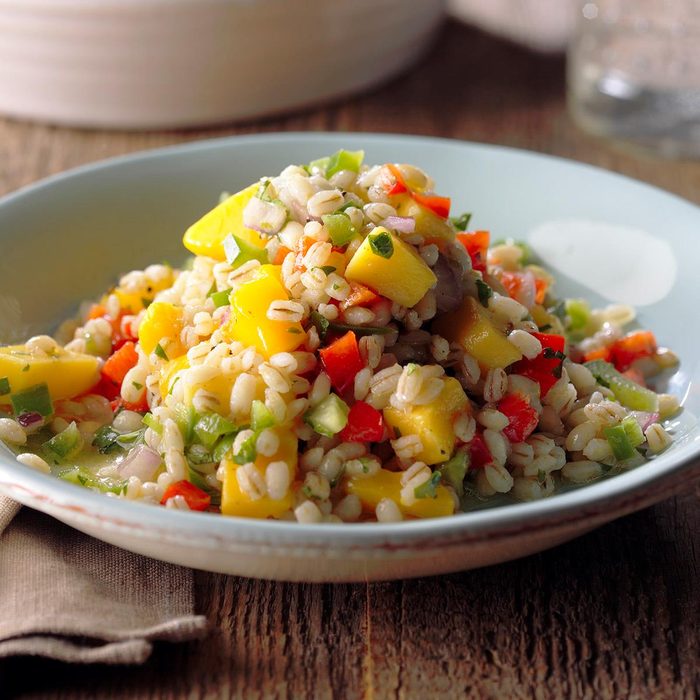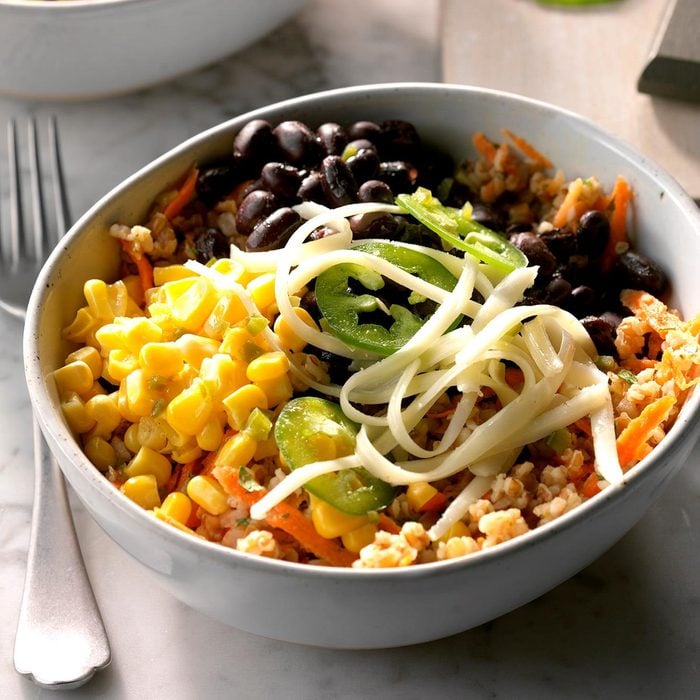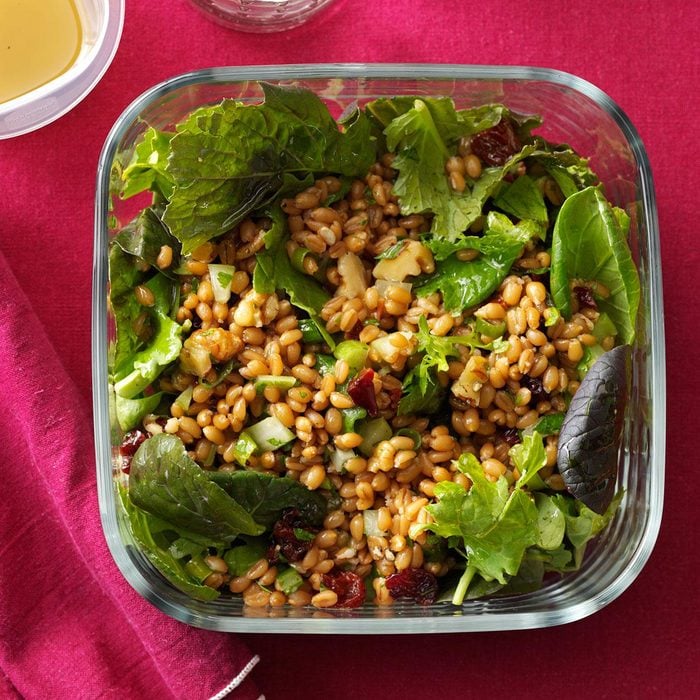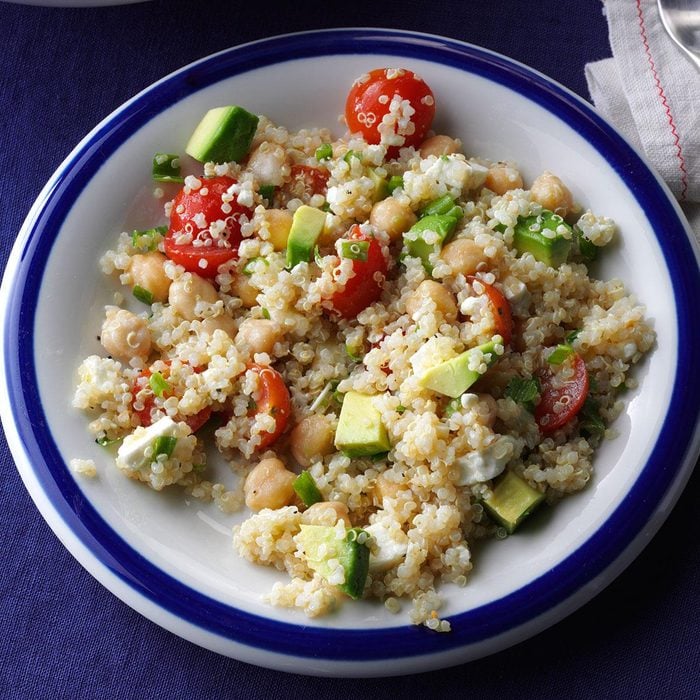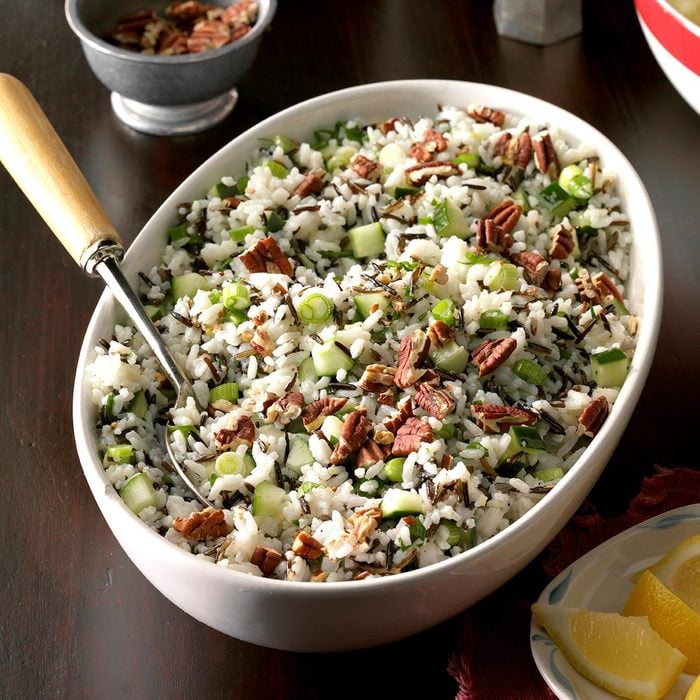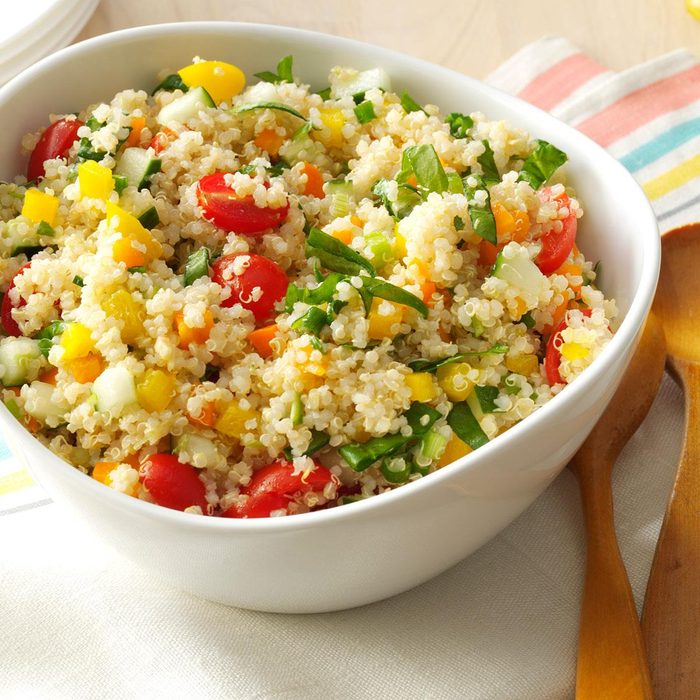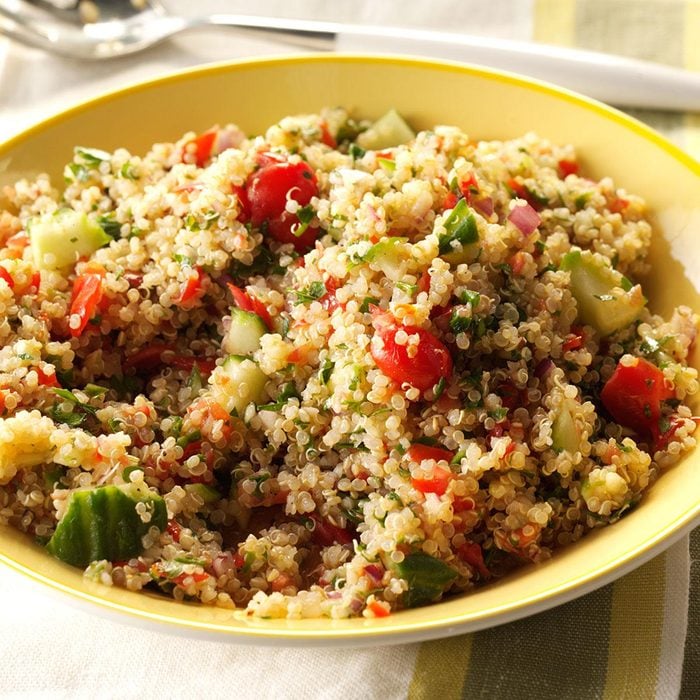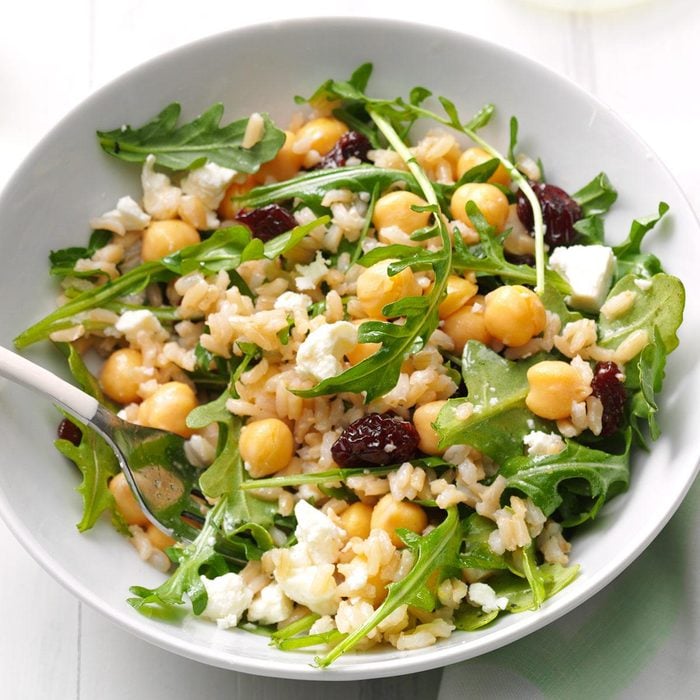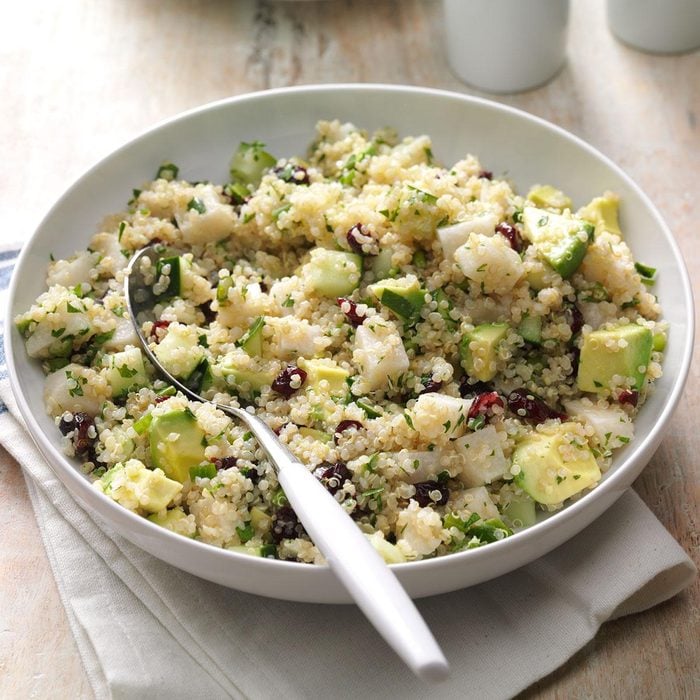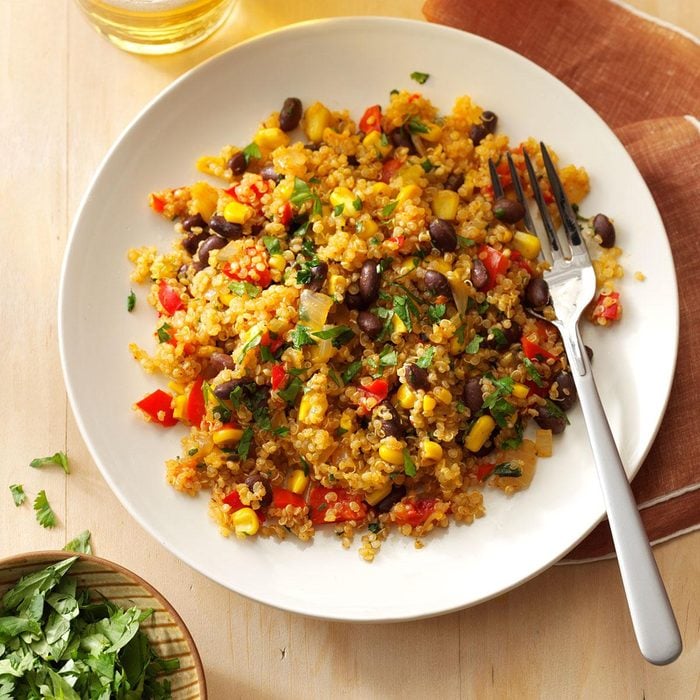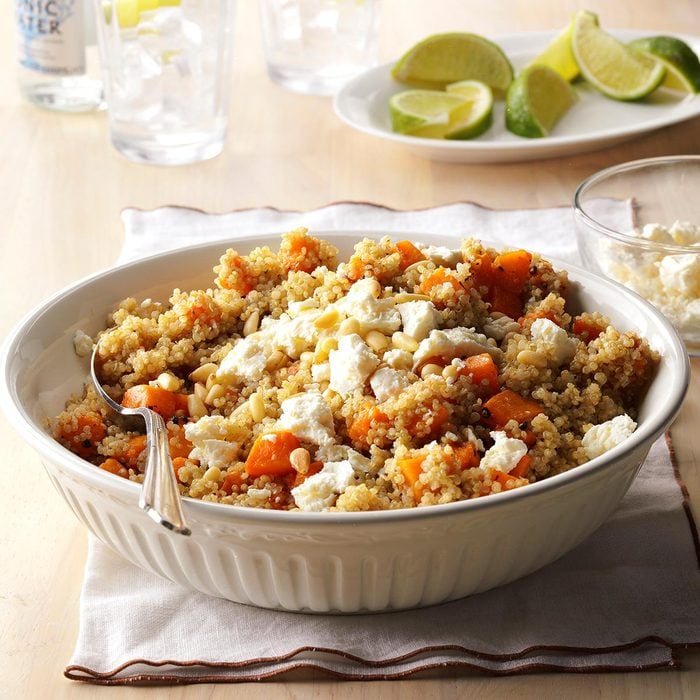There’s no doubt that whole grains are the way to go if you want to make a healthy tweak to your diet. But which boasts the most benefits? Wild rice, brown rice and quinoa are no doubt good for you—and each has a different set of health benefits—but which is healthiest? Let’s compare.
Which is better, brown rice or wild rice?
If you’re looking to cut calories and up your protein intake, wild rice is the better option. A serving of wild rice contains fewer calories and boasts double the protein content of brown rice. Wild rice also has all nine essential amino acids, which we need for things like building muscle and regulating metabolism, mood and the immune system.
Both types of rice are great sources of fiber, antioxidants and nutrients like manganese, magnesium and phosphorus. Brown rice does have more B vitamins compared to wild rice (making it a great choice if you’re on a meat-free diet), so alternating between the two won’t have any drawbacks. If you’re diabetic or pre-diabetic, both wild rice and brown rice can reduce blood sugar. By the way, here’s how to cook wild rice the right way.
Find our best brown rice recipes.
Editor’s Tip: Here’s an interesting fact: Despite the name, wild rice is actually a type of grass which belongs to the Zizania family. Brown rice, like white rice, are members of the Oryza family. Flavor-wise, wild rice has a stronger, earthier taste (it’s particularly great with mushrooms) than mild, nutty brown rice.
Is wild rice or quinoa healthier?
Like wild rice, quinoa has all nine essential amino acids. This pseudo-cereal is packed with protein, fiber and loads of minerals like iron and zinc. There’s a reason why it’s been widely hailed as a superfood. Quinoa and wild rice are comparable in term of their nutritional benefits. Their vitamin and mineral contents are slightly different but one isn’t necessarily healthier than the other. Eat both and get the best of both worlds. Get our full guide to quinoa here.
One thing to note—quinoa is slightly higher in calories than either wild or brown rice. It’s best enjoyed in smaller portions as a side dish, in a salad or as a substitute for oats or rice. Here are our top quinoa recipes if you need a lil’ inspiration.
Which is better, rice or quinoa?
When pitted against rice, quinoa wins the title of healthiest whole grain thanks to its protein, fiber and essential amino acid content. But as we’ve discussed above, both quinoa and brown rice are excellent sources of many of the vitamins and minerals we need in a healthy diet.
The Takeaway:
So what’s the bottom line? Wild rice, brown rice and quinoa all make excellent additions to your diet. All three are gluten-free, which is handy if you’re sensitive to gluten or simply trying to cut down on your gluten intake. And they all are better for you than white rice, thanks to each grain’s high fiber, protein and nutrient contents.
The best part? They all taste great and their versatility means you can whip up a quinoa salad one night, tuck into a hearty rice bowl the next and round the week off with a wild rice bake—all while reaping health benefits.
Before you go, here’s a super simple guide to cooking perfect brown rice.
Try Your Favorite In these Grain Salads
Barley Corn SaladA terrific alternative to pasta salad, this colorful side dish adds refreshing herb flavor to corn, barley, and red and green peppers. Bring it to your next get-together and see how fast it disappears! —Mary Ann Kieffer of Lawrence, Kansas
Bulgur SaladWhether it's nutrition or taste you're after, it doesn't get any better than a bulgur salad. Bulgur wheat, beans, tomatoes, pine nuts and olive oil team up in this Mediterranean-inspired vegetarian main dish salad.
Jambalaya Rice SaladMy cold rice salad has a little hint of spice for a classic jambalaya-style kick. Shrimp, tomatoes, ham and peppers give the dish bright colors and a delightful texture. —Karen Rahn, Hixon, Tennessee
Great Grain SaladI can't think of a better dish to round out a meal. My grain salad features all my favorite nuts, seeds and fruits. Try adding grilled chicken to make it a meal on its own. —Rachel Dueker, Gervais, Oregon
Cranberry-Pecan Wheat Berry SaladI love to experiment with different grains and wanted to give wheat berries a try. My whole family goes nuts for this salad, especially my mom. —Kristen Heigl, Staten Island, New York
Brussels Sprouts & Quinoa SaladWith Brussels sprouts for the green and cranberries for the red, I make a cheery Christmastime salad. Refreshing and versatile, it works with any kind of nut or dried fruit. —Cameron Stell, Los Angeles, California
Mango Barley SaladI made this fresh, colorful mango salad on the fly and it was a big hit! The bright flavor is perfect for a spring or summer picnic, served right away or chilled. —Dan Wellberg, Elk River, Minnesota
Black Bean Bulgur SaladThe only cooking in this easy bulgur salad is heating the broth and bulgur. You can adapt the recipe to your preference; if you want to add chopped cooked chicken, use chicken broth in place of vegetable broth. —Carole Resnick, Cleveland, Ohio
Summer SaladThis is the perfect summer salad recipe for picnics and potlucks. It's full of pearl couscous, quinoa, colorful vegetables and fruit.
Wheat Berry SaladThis hearty salad is bursting with harvest flavors and healthful omega-3s. The chewy wheat berries, sweet-tart dried cherries and crunchy walnuts make a winning combination.—Nancy Lange, Phoenix, Arizona
Avocado & Garbanzo Bean Quinoa SaladThis delicious quinoa avocado salad is high in protein and holds well in the fridge for a few days. If you make it ahead, add avocados and tomatoes right before serving. —Elizabeth Bennett, Seattle, Washington
Lemon Rice SaladThis salad makes a refreshing side dish for a special occasion meal. I take it to holiday potluck suppers and other family gatherings. People enjoy the combination of flavors, and I like that it can be made ahead. —Margery Richmond, Lacombe, Alberta
Colorful Quinoa SaladMy youngest daughter recently learned she has to avoid gluten, dairy and eggs, which gave me a new challenge in the kitchen. I put this dish together as a side we could all share. We love it for leftovers too. —Catherine Turnbull, Burlington, Ontario
Quinoa Tabbouleh SaladIn our new cookbook “The Kitchen Decoded,” we include tabbouleh salad because it's super simple and filling. Try red quinoa for a slightly earthier flavor. —Logan Levant, Los Angeles, California
Arugula & Brown Rice SaladWhen we have company, arugula with brown rice is always on the menu. It’s my go-to pick for the potluck and party circuit, and I'm always sharing the recipe. —Mindy Oswalt, Winnetka, California
Lemon Cranberry Quinoa SaladAs the family cook, I appreciate how easy this is to throw together on a busy weeknight. Plus, this salad never gets boring. One of my favorite variations is to substitute diced fresh mango for the cranberries, cilantro for the parsley, and lime for the lemon juice and zest. —Mary Shenk, DeKalb, Illinois
Black Bean & Corn QuinoaSome vegan quinoa recipes are boring, but this one definitely isn't. My daughter’s college asked parents for the best
quinoa recipes to use in the dining halls. This healthy quinoa recipe fits the bill. —Lindsay McSweeney, Winchester, Massachusetts
Warm Squash & Quinoa SaladWhenever I see butternut squash at the supermarket, I buy one. It's amazing tossed with earthy quinoa, Italian spices and crunchy pine nuts. And don't get me started on the browned butter! Yum. —Carly Taylor, Libertyville, Illinois
Fennel Wild Rice SaladThis is a salad I invented years ago when my sister's family had to go gluten-free. It has since become a family favorite, and Thanksgiving just isn't the same without our wild rice salad! —Aimee Day, Ferndale, Washington
Garden Quinoa SaladThis recipe is special to me because it’s delicious as well as healthful. Serve it hot or cold, and enjoy the leftovers while they’re fresh! —Patricia Nieh, Portola Valley, California




















